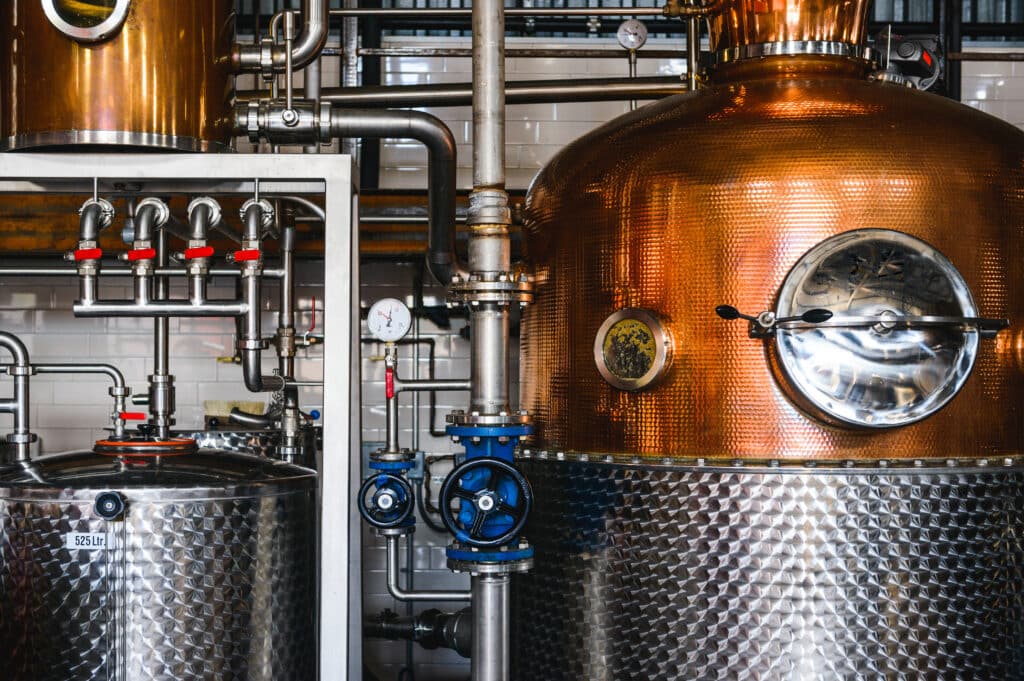Owning a brewery is a dream for many beer lovers here in the Midwest.
With all of the fun stuff like taproom parties, new flavors, events, and… well, beer, it’s easy to see why it’s such a popular dream.
However, there is one crucial part that you need to pay closer attention to; your brewery’s finances.
After all, to keep the party going, you need to stay in business.
The big question is, how do you determine the financial health of your brewery business? How do you know how profitable or unprofitable it is?
This is where a profit and loss (P&L) statement comes into play.
In this blog post, we’ll dive into the details of a P&L statement for your brewery. We’ll cover what it is, why it matters, and even provide you with a handy sample you can use as a reference.
Let’s start by breaking things down into simple terms.
What is a Profit & Loss Statement (P&L)?
A profit and loss (P&L) statement is a document that compares your total revenue against all of your business expenses over a certain period of time (a year-to-date, quarter, or month).
It’s an indicator of your company’s financial health; it shows how it generates profit through sales while managing all of the expenses.
A brewery profit and loss statement is among the most critical financial statements (along with the balance sheet and cash flow statement) that should be updated regularly.

Why is a P&L So Important for Breweries?
A P&L statement is important for breweries for a couple of reasons, the main ones being:
It Helps Measure Your Brewery’s Performance
A P&L is probably the best financial statement you can use when evaluating the performance of your business.
You can quickly see how much money you’re bringing in each month, where you’re spending your money, and notice any unusual or interesting patterns that start to arise across your sales and expenses.
You can then take action based on the figures you see.
For example, you can examine your revenue month-on-month. Did sales go down during a specific time of year? Or maybe they skyrocketed up after the launch of a killer marketing campaign.
Based on what you see, you can take the necessary steps to prepare for the months ahead.
Another important thing to frequently scan in your brewery P&L is how much money is flying out the door each month.
- What are you averaging in marketing costs?
- Have your cost of goods gone up?
- How much are you eating into your profit each month?
- Are your labor costs fluctuating?
These are all questions that can be answered relatively quickly from your P&L.
It’s a Requirement for Loan Application/ Funding
If you plan on asking for money (line of credit, investors, third party lending), you’ll need an updated & accurate P&L.
Investors and lenders ask for the P&L to evaluate your business before they commit to any arrangement.
They use the profit and loss statement to assess your operating and net income against your taxes, debts, and expenses.
This helps them decide whether your business is worthy or viable for their financial assistance, and to what extent.
What Goes Into a Brewery P&L?
A brewery’s P&L includes all of the expenses and revenue over a certain period (monthly, annually, or quarterly).
To prepare a P&L statement, you take the total revenue and deduct the costs, rent, labor, and COGS (costs of goods sold) to get the net profit.
Here are the components of a P&L statement of a brewery:
1. Cost of Goods Sold (COGS)
This includes all the raw materials you use to make beer, including hops, yeast, malt, water, etc. You should also include the cost of packaging materials such as bottles and cans.
2. Labor costs
Your brewery labor costs include all of your staff costs, including taxes and benefits (social security), bonuses, vacation days, sick days, overtime, etc.
To stay organized, you can categorize the staff costs according to their departments, like the sales team, operations, and management.
3. Sales
In the sales section, you should include everything you sell, including beer, barrels, and beer cans, waste products sold to other companies, and anything else you make money from.
4. Operating costs
Operation costs include the daily expenses you incur in your brewery business. They include rent, bookkeeping, insurance, shipping, and even smaller tasks such as waste removal and disposal. The goal is to include everything you spend, excluding the cost of goods sold ( COGS).
Like we mentioned above, it’s advisable to divide your operation costs into different categories. For example, you can have marketing (advertising, SEO), team costs (employees, contractors), professional services (bookkeeping, lawyer fees, business advisors) and others. There is no wrong or right way; go with what makes sense.
5. Non-operating costs
Non-operating costs are costs that aren’t part of your daily brewery operation. They are the boring things like debt interest expenses, corporate taxes, depreciation, and amortization.
How to Interpret a Brewery’s Profit and Loss Statement
As a brewery owner, you’ll come across different types of P&L statements.
Some are shorter and easier to interpret, while others are more detailed and can be a little complex.
However, a few specific terms are used in all P&L statements, and understanding them is a step closer to interpreting all income statements. Here are the terms and what they mean:
- Gross profit: The sum of total sales minus the COGS.
- EBITDA: Earnings before interest, taxes, depreciation, and amortization.
- Operating profit / EBIT: Earnings before interest and taxes; it’s the sum of your sales minus labor, operating costs, and all variables.
- Net profit or Net loss: Total sales minus operating and non-operating costs. If the figure is positive, your business is making a profit; if it’s negative, your brewery is spending more than it’s making.
Get Help Managing Your Brewery Finances
The worst thing you can do is run your brewery blindly.
We see a lot of brewery owners assume that their business is making money simply because money is flowing freely around the organization.
In order to run a successful brewery, you must know exactly where your business stands financially at all times, even if it’s uncomfortable.
How much are you making each money, exactly, and how much are you spending, to the cent?
A profit and loss statement help you to accomplish this, and paves the way for better financial decisions for your brewery.
If you need help getting your brewery business organized, and you’d like a clearer picture of how your business is running, we strongly recommend working with an experienced brewery accountant.
We help brewery owners like you gain a clearer picture of their brewery finances, clean up the books, make more strategic tax decisions, and help forecast for the months and years ahead.
If you don’t have a brewery accountant you’re happy with, you can book a complimentary call with one of our team members anytime.
Use Our Get In Touch Form Here
Until next time!




